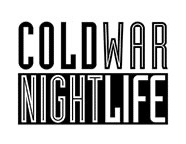An ornamental swan wrapped in cellophane. A worker knocking down a mountain in Switzerland. A collective farmer in a field. A marriage in the lights of a Midlands factory. An imposing building covered in banners with a foreground of tulips. These are the images that defined the image of Depeche Mode through their first five album covers. All shot by the legendary photographer, Brian Griffin, they represented the band on the shelves of record shops, in the collections of fans, and in the music press. There were critics who (unfairly) thought the group’s pop lightweight, but their cover art was decidedly serious.
It was fine art, at a time when many record covers showed a band’s latest hairstyles. Griffin’s image for A Broken Frame – the album released into the gloom of 1982 after the departure of Vince Clarke – was selected by Life magazine to front its collection, The World’s Best Photographs (1980-1990). Daniel Miller had resolved to give the band the best resources he could, when he took on producing them for his Mute Records imprint, and his choice of Griffin gave them visuals as distinctive and iconic as their music.

Speak & Spell cover art by Brian Griffin
Griffin came to Miller’s attention because his agent had an office above Mute’s. At the time, Griffin’s work was prominent in record shops, featuring on releases from Iggy Pop, Echo & The Bunnymen, Ian Dury, Simple Minds, and Elvis Costello. The commission to create an image for Depeche Mode’s first album, Speak & Spell, led to an abstract but striking image of a plastic-wrapped swan that has come to be interpreted, with hindsight, as a commentary on consumer capitalism. Griffin’s working class politics were given fuller reign with the next two albums, which featured the sickle (A Broken Frame) and hammer (Construction Time Again) as core elements of the cover photos. That led to an excited journalist at Melody Maker trying to get Dave Gahan to come out as a fellow traveller, when he was more interested in Kerrang! than the Communist Manifesto.
There have been other sources of confusion between the band and Griffin’s artwork. In 1982, some said that the peasant on the cover of A Broken Frame was a man – perhaps even Daniel Miller in Slavic farmer’s drag. In 1984, rumours circulated that the cover of Some Great Reward showed Alan Wilder getting married. Both were wrong. The hunger for information about the band, and the need to interpret the images in light of its evolution, led to pre-internet speculation fuelled by the multiple layers of meaning in Griffin’s work.

Depeche Mode promotional shot by Brian Griffin
There is a chance to set the record straight with the release of MODE, Griffin’s latest book. With a preface from Gareth Jones, an interview with Griffin that explores all of his work for the band, and an essay by Roger Butler that tells the story of the video for “Only When I Lose Myself,” it is the definitive history of a relationship that helped to define the image of the band.
Backed by fans of Depeche Mode and Griffin through a Kickstarter campaign, and with energy provided by DM-interpreter Vaughn George, MODE is designed by the same team who created Griffin’s biographical work, Black Country Dada. It collects previously unseen images from his shoots for the records and promotional materials, showing Griffin’s striking style. It also includes pictures of artefacts from the archives, which give Depeche Mode fans more of the context of the work. Photographers will be awed by the technical skills and creative techniques used by Griffin. Fans of the band will be enveloped in the experience of working with the band and label. It is an exquisite and badly-needed window into a period when one of the world’s most important bands was finding its voice and commercial success.

